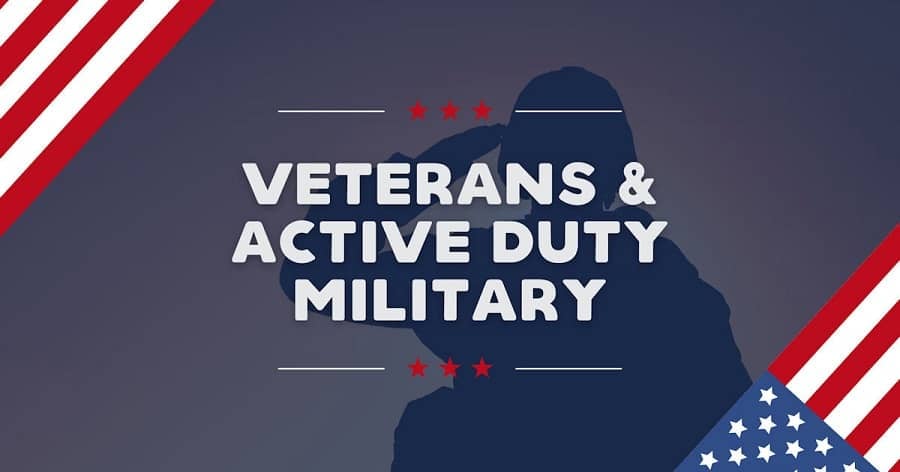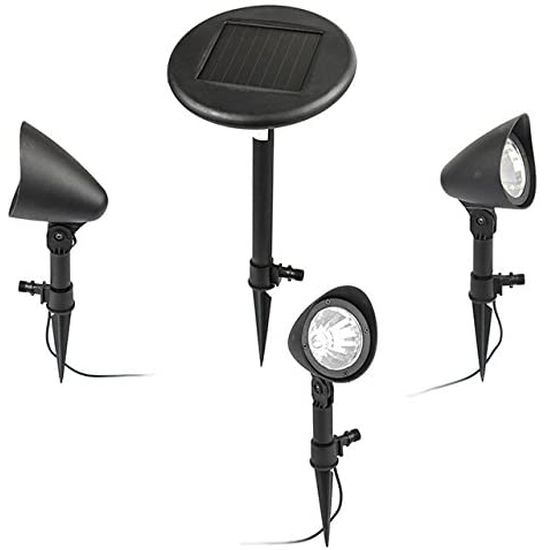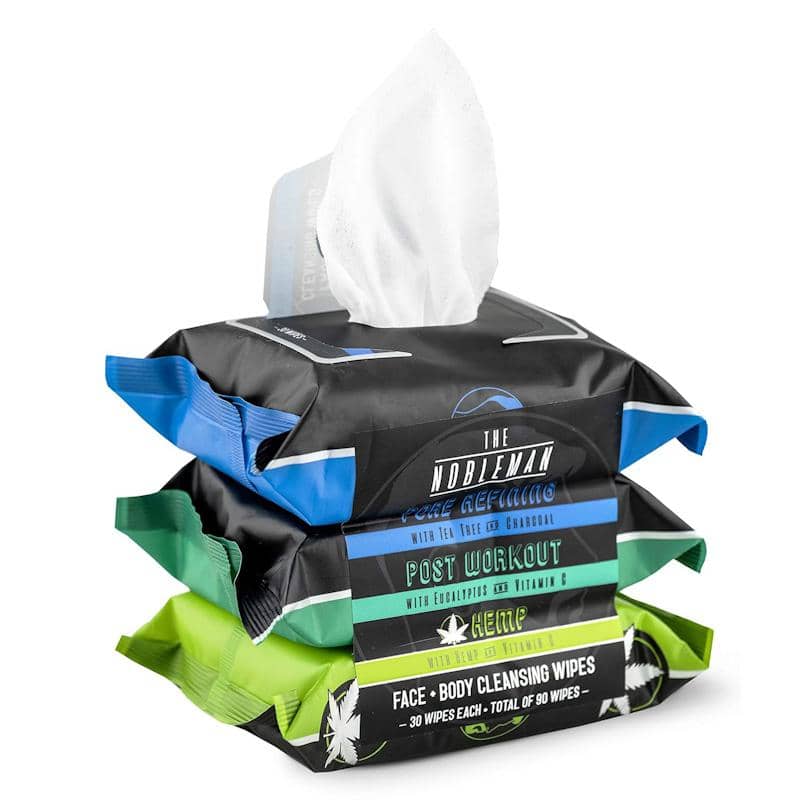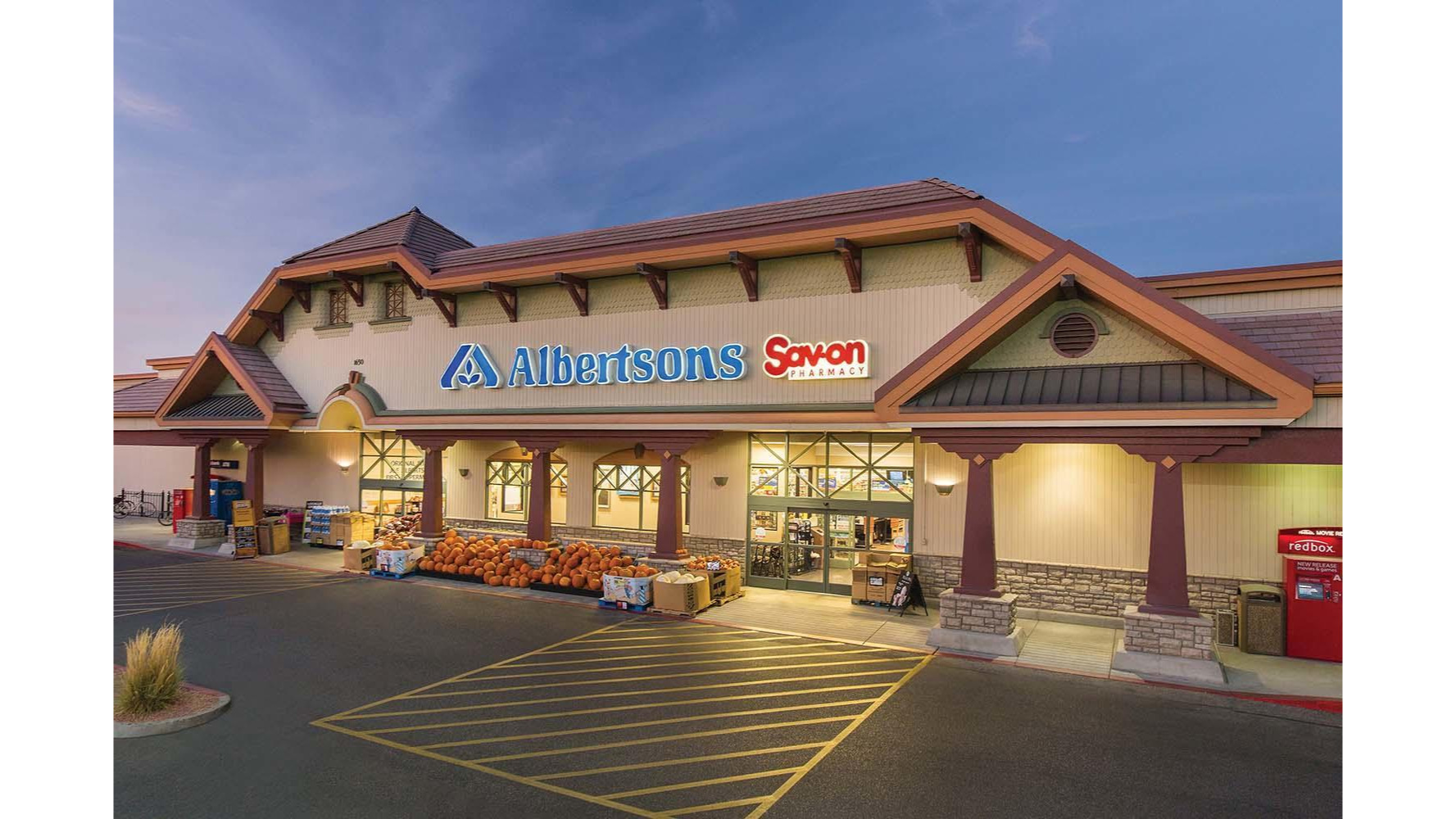As the 2023 hurricane season approaches, it's essential to equip yourself with the knowledge and tools necessary to protect yourself, your loved ones, and your property. Hurricanes are powerful and destructive natural disasters that can cause significant damage and pose risks to human lives. However, with proper preparation and planning, you can mitigate the potential impact of these storms. In this comprehensive guide, we will delve into various aspects of hurricane preparedness, including creating an emergency plan, securing your home, assembling an emergency kit, and staying informed throughout the season.
Jump ahead
Section 1: Understanding Hurricanes
1.1 What is a Hurricane?
A hurricane is a powerful and destructive weather phenomenon that forms over warm ocean waters in tropical regions. It is a type of tropical cyclone, characterized by a low-pressure center and strong rotating winds. Hurricanes are intense storms that can cause widespread damage to coastal areas and inland regions.
The formation of a hurricane begins with a combination of warm ocean waters, moisture, and favorable atmospheric conditions. When the ocean surface temperature exceeds 80 degrees Fahrenheit (27 degrees Celsius) and the surrounding air is unstable, it provides the necessary energy and moisture for a hurricane to develop. As warm air rises from the ocean's surface, it creates an area of low pressure. Air from surrounding areas rushes in to fill the void, creating strong winds that spiral inward toward the center of the storm.
Hurricanes are categorized based on their maximum sustained wind speeds using the Saffir-Simpson
Hurricane Wind Scale. This scale classifies hurricanes into five categories:
Category 1: Winds range from 74 to 95 miles per hour (119 to 153 kilometers per hour). These hurricanes cause minimal damage.
Category 2: Winds range from 96 to 110 miles per hour (154 to 177 kilometers per hour). These hurricanes can cause moderate damage. (i.e.
Hurricane Zeta)
Category 3: Winds range from 111 to 129 miles per hour (178 to 208 kilometers per hour). These hurricanes are considered major and can cause significant damage.
Category 4: Winds range from 130 to 156 miles per hour (209 to 251 kilometers per hour). These hurricanes cause severe damage. (i.e.
Hurricane Ida)
Category 5: Winds exceed 157 miles per hour (252 kilometers per hour). These hurricanes cause catastrophic damage. (i.e.
Hurricane Katrina)
The destructive power of hurricanes is not limited to high winds. They also bring heavy rainfall, storm surge, and tornadoes. The storm surge is one of the most dangerous aspects of a hurricane, as it can cause coastal flooding when the winds push the ocean waters onto the land. The heavy rainfall associated with hurricanes can lead to flash flooding, landslides, and widespread damage to infrastructure.
1.2 The Anatomy of a Hurricane
The
anatomy of a hurricane consists of several key components that contribute to its formation, structure, and behavior. Understanding these components can provide valuable insights into the inner workings of a hurricane. Let's explore the main elements that make up the anatomy of a hurricane:
Eye: The eye is a circular area at the center of the hurricane characterized by calm winds, clear skies, and often a well-defined, cloud-free appearance. The eye can range in size from a few miles to more than 60 miles (100 kilometers) in diameter in the largest hurricanes. It is the calmest part of the storm, and sometimes the sky appears to be clearing during its passage. However, it is important to note that the eye is surrounded by the most violent part of the hurricane, known as the eyewall.
Eyewall: The eyewall is a ring of intense thunderstorms surrounding the eye of the hurricane. It is the most destructive and dangerous part of the storm, where the strongest winds, heaviest rainfall, and most severe weather conditions are experienced. The eyewall is characterized by towering thunderclouds, heavy precipitation, and strong convective activity. The strongest winds and highest storm surge occur in this region.
Rainbands: Rainbands are bands of clouds and precipitation that spiral outward from the eyewall and extend across the entire hurricane. They are often arranged in concentric rings and can stretch for hundreds of miles from the center of the storm. Rainbands can vary in intensity, producing heavy rainfall, gusty winds, and even tornadoes. These bands are responsible for the widespread rain and storms associated with hurricanes.
Spiral Bands: Spiral bands are similar to rainbands but are narrower and more discrete. They form outside the main rainbands and can extend for tens or hundreds of miles from the center of the hurricane. Spiral bands are composed of showers and thunderstorms that rotate around the storm's circulation. These bands can produce gusty winds, heavy rain, and localized storm activity.
Outflow: Outflow is the upper-level ventilation system of a hurricane. It refers to the outward flow of air from the top of the storm, high in the atmosphere. As the warm air rises near the eyewall, it spreads outwards and descends in the upper levels, creating a circular outflow pattern. Outflow is crucial for the hurricane's development and maintenance as it helps maintain the balance of inflowing and outflowing air.
Storm Surge: Storm surge is one of the most dangerous and damaging aspects of a hurricane. It refers to the abnormal rise of seawater above the normal astronomical tide level along the coast. Storm surge occurs when strong onshore winds and low atmospheric pressure push the ocean waters inland, often resulting in severe coastal flooding. The height and extent of the storm surge depend on various factors, including the intensity of the hurricane, the shape of the coastline, and the timing of the surge relative to the tides.
Rainfall: Hurricanes are known for their heavy rainfall, which can lead to widespread flooding and significant water-related hazards. The intense updrafts within the storm's rainbands and eyewall produce copious amounts of precipitation. The amount of rainfall can vary depending on the size, intensity, and speed of the storm, as well as the interaction with other weather systems.
Understanding the anatomy of a hurricane is essential for meteorologists, emergency management officials, and individuals living in hurricane-prone areas. It helps in predicting the behavior and potential impacts of these powerful storms, enabling better preparation, response, and mitigation strategies to protect lives and property.
It is important to note that hurricanes are highly complex systems, and their anatomy can vary from storm to storm.
1.3 The Saffir-Simpson Hurricane Wind Scale
The Saffir-Simpson Hurricane Wind Scale is a widely used classification system that categorizes hurricanes based on their maximum sustained wind speeds. This scale provides a standardized way to communicate the potential impacts and severity of a hurricane to the public. Let's delve into the different categories of the Saffir-Simpson Hurricane Wind Scale:
Category 1: A Category 1 hurricane is characterized by maximum sustained winds between 74 and 95 miles per hour (119-153 kilometers per hour). These hurricanes are considered to be relatively weak, but still capable of causing damage. In a Category 1 hurricane, there may be minimal damage to buildings, primarily focused on shrubbery, trees, and unanchored mobile homes. Storm surge can reach heights of 4 to 5 feet (1.2-1.5 meters) above normal levels.
Category 2: Category 2 hurricanes have maximum sustained winds ranging from 96 to 110 miles per hour (154-177 kilometers per hour). These storms are stronger than Category 1 hurricanes and can cause moderate damage. In this category, there may be extensive damage to mobile homes, poorly constructed signs, and vegetation. Additionally, there is an increased risk of roof and window damage to buildings. Storm surge heights can range from 6 to 8 feet (1.8-2.4 meters) above normal levels.
Category 3: Category 3 hurricanes are considered major hurricanes. They have maximum sustained winds between 111 and 129 miles per hour (178-208 kilometers per hour). Category 3 hurricanes can cause significant damage. They can result in extensive damage to small buildings, and well-built homes may sustain damage to their roofs, doors, and windows. Storm surge heights can reach 9 to 12 feet (2.7-3.7 meters) above normal levels, posing a serious coastal flooding threat.
Category 4: Category 4 hurricanes have maximum sustained winds ranging from 130 to 156 miles per hour (209-251 kilometers per hour). These hurricanes are characterized by severe damage. In a Category 4 hurricane, well-built homes can suffer severe damage, including loss of the roof structure and exterior walls. Additionally, most trees will be snapped or uprooted, and power outages can be widespread. Storm surge heights can range from 13 to 18 feet (4-5.5 meters) above normal levels.
Category 5: Category 5 hurricanes are the most severe on the Saffir-Simpson scale. They have maximum sustained winds of 157 miles per hour (252 kilometers per hour) or higher. Category 5 hurricanes cause catastrophic damage. In this category, complete roof failure and wall collapse can occur in well-built homes. Most trees and power poles will be downed, and power outages can last for weeks or even months. Storm surge heights can exceed 18 feet (5.5 meters) above normal levels, leading to extensive coastal flooding.
It is important to note that while the Saffir-Simpson Hurricane Wind Scale provides valuable information about a hurricane's wind strength, it does not capture other potential hazards such as rainfall, storm surge, or tornadoes. These factors can significantly impact the overall severity and impact of a hurricane.
1.4 Tracking Hurricanes: National Hurricane Center and Weather Apps
Tracking hurricanes is essential for staying informed about their location, intensity, and potential impacts. The National Hurricane Center (NHC) and various weather apps play a crucial role in providing up-to-date and accurate information to the public. Let's explore these resources in detail:
National Hurricane Center (NHC): The National Hurricane Center, a division of the National Oceanic and Atmospheric Administration (NOAA), is the official source for hurricane information in the United States. The NHC monitors and forecasts tropical cyclones, including hurricanes, in the Atlantic and eastern Pacific basins. They issue advisories, watches, and warnings to keep the public informed about approaching storms.
The NHC website (
www.nhc.noaa.gov) provides a wealth of information, including the latest hurricane forecasts, storm track maps, and public advisories. It also offers educational resources on hurricane preparedness and historical storm data. The NHC's Twitter account (
@NHC_Atlantic) and other social media channels are frequently updated with real-time information and storm-related news.
Weather Apps: Weather apps have become popular tools for tracking hurricanes and other weather conditions. These apps provide real-time updates, radar images, and storm tracks, allowing users to monitor hurricanes on their mobile devices. Here are some popular weather apps with hurricane tracking features:
The Weather Channel: The Weather Channel app offers comprehensive hurricane tracking features, including storm forecasts, interactive radar maps, and alerts. Users can track storms in real-time and receive notifications about approaching hurricanes.
AccuWeather: AccuWeather provides detailed hurricane information, including storm tracks, forecasts, and satellite imagery. The app offers customizable alerts to keep users informed about hurricane-related developments.
Weather Underground: Weather Underground offers a user-friendly interface with interactive storm tracking tools. Users can access storm forecasts, radar images, and crowd-sourced reports from weather enthusiasts in affected areas.
NOAA Weather Radar: This app, developed by the National Oceanic and Atmospheric Administration, provides high-resolution radar images, severe weather alerts, and hurricane tracking features. It offers real-time storm tracking and reliable weather information.
Hurricane Tracker: This app is specifically designed for tracking hurricanes. It provides comprehensive storm information, including forecasts, satellite images, and historical data. Users can set up custom alerts and receive notifications about hurricanes in their selected regions.
It's important to note that while weather apps provide valuable information, it is always recommended to rely on official local sources like the NHC for the most accurate and authoritative updates during hurricane events. Weather apps should be used as supplementary tools for tracking hurricanes and staying informed about local weather conditions.
Section 2: Creating an Emergency Plan
2.1 Importance of an Emergency Plan
The importance of having a
hurricane emergency plan cannot be overstated. Hurricanes are powerful and destructive weather events that can cause widespread damage, disrupt essential services, and pose significant risks to human lives. By having a well-thought-out emergency plan in place, individuals, families, and communities can minimize the impact of hurricanes and ensure their safety. Here are some key reasons why having a hurricane emergency plan is crucial:
Personal Safety: The primary objective of any emergency plan is to ensure the safety of individuals and their families. A well-prepared plan includes guidelines on evacuation routes, designated safe areas within homes, and actions to take during different stages of a hurricane. This plan helps people make informed decisions to protect themselves from potential harm caused by strong winds, heavy rains, storm surge, and other hazards associated with hurricanes.
Evacuation Preparedness: In certain situations, authorities may issue evacuation orders to protect people from the most severe impacts of a hurricane. Having an emergency plan in place helps individuals and families prepare for evacuation in a timely and organized manner. It includes identifying evacuation routes, assembling essential items like food, water, medications, important documents, and having a plan for transportation and accommodation during the evacuation period.
Communication and Reunification: During a hurricane, communication networks can be disrupted, making it challenging to connect with loved ones. An emergency plan should include communication strategies, such as establishing a designated out-of-area contact person and using alternative communication methods like text messages. Additionally, the plan should outline procedures for reuniting family members if they become separated during the emergency.
Property Protection: A hurricane emergency plan also addresses measures to protect property from potential damage. This may include securing outdoor furniture, trimming trees, reinforcing doors and windows, and shutting off utilities if necessary. By taking proactive steps to safeguard property, individuals can minimize the risk of structural damage and reduce potential financial losses.
Essential Supplies and Resources: In the aftermath of a hurricane, it may take days or even weeks for normal services to be restored. An emergency plan should outline the necessary supplies and resources needed to sustain individuals and families during this period. This includes stockpiling non-perishable food, water, medications, batteries, flashlights, and other essential items. Having these supplies readily available ensures individuals can cope with the immediate aftermath of a hurricane without relying solely on external assistance.
Community Resilience: A well-prepared community is more resilient in the face of a hurricane. By developing and implementing a comprehensive emergency plan, neighborhoods and communities can work together to support each other during and after a hurricane. This may include sharing resources, offering assistance to vulnerable populations, and organizing community response efforts. A collective approach to preparedness enhances community resilience and facilitates a quicker recovery process.
Peace of Mind: Knowing that you have a well-thought-out emergency plan in place provides peace of mind. It reduces stress and anxiety during the hurricane season, allowing individuals to focus on implementing the plan rather than scrambling for last-minute preparations. Having a plan in advance helps individuals feel more in control and confident in their ability to respond effectively to a hurricane.
2.2 Developing a Family Emergency Communication Plan
Developing a family emergency communication plan is crucial to ensure the safety and well-being of your loved ones during a hurricane. Effective communication is vital, especially when normal communication channels may be disrupted or inaccessible. Here are some steps to help you create a comprehensive family emergency communication plan specifically tailored for a hurricane:
Establish an Out-of-Area Contact: Designate a reliable out-of-area emergency contact person who can serve as a central point of communication for your family. Choose someone who is unlikely to be affected by the same hurricane and make sure all family members have their contact information. This person will act as a liaison to relay information and help reunite family members if they become separated.
Share Contact Information: Compile a list of important contact information for each family member, including names, phone numbers, and addresses. Distribute this list to all family members and make sure everyone carries a copy in their wallet, purse, or backpack. Include emergency contacts such as local authorities, hospitals, and utility companies.
Utilize Group Messaging Apps: Install and familiarize yourself with group messaging apps on your smartphones. These apps allow you to create groups where you can communicate with multiple family members simultaneously. Popular options include WhatsApp, Signal, or
Telegram. Ensure that everyone in your family has the app installed and knows how to use it.
Establish Meeting Points: Identify meeting points both within your neighborhood and outside of your immediate area. Choose locations that are easily accessible and safe. In case of evacuation or if you are unable to return home, these meeting points will serve as designated areas for family members to reunite.
Determine Evacuation Procedures: Discuss and establish evacuation procedures with your family members. Determine when and under what circumstances you will evacuate, as well as the evacuation routes you will take. Share this information with everyone and ensure they understand the plan. Make sure to take into account any family members with special needs or pets.
Know School and Workplace Plans: Familiarize yourself with the emergency plans of your children's schools and your workplace. Understand their procedures for communication and reunification during a hurricane. Ensure that their contact information is up-to-date and that you are aware of any emergency protocols they have in place.
Stay Informed: Keep yourself informed about the hurricane's progress through local news, weather apps, and updates from local authorities such as the National Hurricane Center. Follow their instructions and recommendations for evacuation or other safety measures. Stay tuned to emergency radio channels or battery-powered radios for updates if power and internet services are disrupted.
Practice the Plan: Regularly review and practice your family emergency communication plan. Conduct drills to ensure that everyone knows what to do and where to go. Practice sending messages through the designated communication channels to familiarize yourselves with the process. Regular practice will help ensure that the plan becomes second nature to all family members.
Remember, an effective family emergency communication plan requires proactive preparation and open communication. Review and update the plan annually or whenever there are significant changes in contact information or family circumstances. By having a well-established plan in place, you can increase the safety and security of your family during the challenging times of a hurricane.
2.3 Identifying Evacuation Routes
Identifying hurricane evacuation routes is an essential part of hurricane preparedness. These routes are predetermined roads or highways that are designated to facilitate the safe and efficient evacuation of residents in the event of an approaching hurricane. Here are some steps to help you identify and familiarize yourself with hurricane evacuation routes in your area:
Contact Local Authorities: Start by reaching out to your local emergency management agency, city or county government, or transportation department. These organizations will have information about official hurricane evacuation routes specific to your region. You can find their contact information online or in the local phone directory.
Check Official Websites and Resources: Many government websites and emergency management agencies provide comprehensive information about hurricane evacuation routes. Visit their websites or search for dedicated hurricane preparedness resources to access maps, detailed route information, and any special instructions related to evacuation.
Review Local Evacuation Maps: Local authorities often distribute evacuation maps that outline the designated routes in your area. These maps may be available online, at government offices, or in local emergency preparedness publications. Study the maps to familiarize yourself with the routes and understand the direction in which they lead.
Follow Directional Signs: Pay attention to evacuation signs posted along major roadways or highways in your area. These signs will guide you towards the designated evacuation routes during an emergency. Take note of these signs and make mental or physical notes of the directions and routes they indicate.
Attend Community Meetings and Workshops: Local community meetings or workshops focused on hurricane preparedness often provide information on evacuation routes. These events are a valuable opportunity to engage with local authorities, ask questions, and gain a better understanding of the specific evacuation procedures and routes in your area.
Utilize GPS Navigation Systems: Make use of modern technology by programming GPS navigation systems or using smartphone navigation apps that provide real-time traffic updates and route suggestions. During an evacuation, these tools can help you navigate the designated evacuation routes and avoid any road closures or congestions.
Consider Alternate Routes: While official evacuation routes are designated for safety and efficiency, they may become congested during a widespread evacuation. It's helpful to identify alternative routes that can be used if the primary routes are heavily congested or inaccessible. These alternative routes can provide you with additional options to reach your destination safely.
Practice the Routes: Familiarize yourself with the evacuation routes by driving them during non-emergency times. This will help you become more comfortable with the directions, road conditions, and any specific landmarks or intersections along the way. Practicing the routes in advance will also allow you to estimate the time it takes to reach your destination.
Stay Informed: Stay updated on hurricane-related information through local news, weather alerts, and emergency management communications. Follow the instructions and guidance provided by local authorities, including any announcements regarding evacuation orders and the utilization of specific routes.
Remember, it is important to follow official guidance and instructions during a hurricane evacuation. Evacuation routes are designed to prioritize safety, and it's crucial to heed the advice of local authorities to protect yourself and your family. Stay informed, plan ahead, and be prepared to evacuate promptly when advised to do so.
2.4 Establishing Meeting Points
Establishing meeting points after a hurricane is a crucial aspect of family emergency planning. In the aftermath of a hurricane, communication networks may be disrupted, and it's essential to have designated meeting points where family members can reunite and ensure everyone's safety. Here are some steps to help you establish meeting points after a hurricane:
Determine Primary and Secondary Meeting Points: Select two or more meeting points for your family to gather after a hurricane. The primary meeting point should be a central and easily accessible location near your home, such as a neighbor's house, a community center, or a designated emergency shelter. The secondary meeting point should be farther away from your home, ideally outside the affected area but still within a reasonable distance.
Consider Safety and Accessibility: When choosing meeting points, prioritize safety and accessibility. Ensure that the locations are in safe areas, away from hazards or damage caused by the hurricane. Also, consider the accessibility of the meeting points, including transportation routes and any potential obstacles that may arise after the storm.
Communicate the Meeting Points: Share the details of the meeting points with all family members and ensure everyone understands their significance. It's important to communicate the addresses, landmarks, or specific instructions to reach each meeting point. Write down the information and distribute it to each family member. Additionally, save the meeting point locations in everyone's mobile phones or keep a printed copy in their emergency kits.
Discuss Contingency Plans: In the event that family members are unable to reach the primary meeting point, establish contingency plans. Discuss alternative meeting points or a sequence of meeting points where everyone can gather. This ensures that even if one location is inaccessible, there are other options available for reuniting.
Consider Extended Family and Pets: If you have extended family members living nearby or pets that need to be accounted for, include them in your meeting point plans. Coordinate with relatives to establish a common meeting point or determine a method of communication to ensure everyone's safety. For pets, identify a safe location where they can be sheltered and plan accordingly.
Utilize Technology and Communication Tools: Use technology to aid in communication during the aftermath of a hurricane. Establish a designated family group chat or communication channel where everyone can provide updates on their safety and whereabouts. Consider using walkie-talkies or battery-operated radios as backup communication devices in case cell phone networks are down.
Plan for Different Scenarios: Anticipate different scenarios that may occur after a hurricane. Discuss how long you should wait at a meeting point before considering alternative plans or seeking help. If there are family members with specific medical needs or disabilities, address their requirements and develop plans accordingly.
2.5 Preparing for Special Needs and Medical Requirements
Preparing for special needs and medical requirements during a hurricane is crucial to ensure the safety and well-being of individuals with specific health conditions or disabilities. Here are some important steps to consider when developing an emergency plan for those with special needs:
Create a Personal Support Network: Build a support network of family members, friends, neighbors, or caregivers who can assist and support individuals with special needs during an emergency. Discuss your emergency plan with them and ensure they understand the specific needs and requirements of the person(s) in question.
Maintain a Current List of Emergency Contacts: Keep an updated list of emergency contacts readily available. This should include phone numbers of doctors, specialists, hospitals, pharmacies, caregivers, and any other relevant healthcare providers. Make sure all family members and caregivers have access to this list.
Arrange for Specialized Transportation: Identify and arrange for transportation options that can accommodate individuals with special needs. Contact local authorities, special needs transportation services, or disability support organizations to understand the available transportation options during emergencies.
Stock up on Medications and Medical Supplies: Maintain an ample supply of necessary medications, medical equipment, and supplies. Stock up on prescription medications to last at least a week or more, depending on the duration of the potential emergency situation. Include items such as
oxygen tanks,
mobility aids,
spare batteries,
catheters, and any other essential medical supplies.
Maintain a Documented Medical History: Prepare a comprehensive document that outlines the individual's
medical history, including current diagnoses, medications, allergies, and contact information for healthcare providers. Make copies of this document and store them in multiple secure locations, such as a waterproof bag, a safe deposit box, or with a trusted family member or friend.
Plan for Power Outages: Individuals who rely on electricity for life-sustaining medical equipment should have a backup power source, such as a
generator or
battery backup system. Ensure that all equipment is in good working condition and that spare batteries are readily available.
Arrange for Backup Caregivers: Identify backup caregivers who can provide assistance if the primary caregiver is unable to fulfill their responsibilities during an emergency. Communicate with these individuals and ensure they are aware of the specific needs and requirements of the person they will be caring for.
Develop a Communication Plan: Establish a communication plan to stay in touch with medical professionals, caregivers, and other members of the support network during and after a hurricane. Determine the preferred mode of communication and ensure all parties have the necessary contact information.
Section 3: Securing Your Home
3.1 Assessing Vulnerabilities: Home Inspection Checklist
Assessing the vulnerabilities of your home is an essential step in hurricane preparedness. By conducting a thorough home inspection, you can identify areas that may need reinforcement or maintenance to better withstand the strong winds, heavy rain, and potential storm surge associated with hurricanes. Here is a checklist to help you assess your home's vulnerabilities and take necessary precautions:
Roof:
- Inspect the roof for loose or damaged shingles, tiles, or metal panels.
- Check for signs of leaks or water damage in the attic or ceiling.
- Ensure that the roof is securely attached to the structure. (You may want to grab some straps like these just in case!)
Windows and Doors:
- Examine windows and doors for cracks, gaps, or damaged frames.
- Ensure that all windows and doors are fitted with impact-resistant shutters or have impact-resistant glass.
- Inspect the weatherstripping around windows and doors and replace if necessary to prevent water intrusion.
Garage:
- Verify that the garage door is reinforced and meets local building codes for wind resistance.
- Install a bracing system or hurricane-resistant garage door if needed.
- Secure any loose items in the garage that could become projectiles during high winds.
Exterior Walls:
- Check the condition of exterior walls, including siding or stucco, for cracks or deterioration.
- Repair any damaged areas to prevent water infiltration.
- Reinforce weak areas or consider installing hurricane straps or clips to enhance the structural integrity.
Gutters and Downspouts:
- Clean gutters and downspouts to ensure proper drainage of rainwater.
- Repair any leaks or damage to prevent water from pooling near the foundation.
Trees and Landscaping:
- Trim tree branches that are close to the house or could potentially fall on the property during high winds.
- Remove dead or weak trees that pose a threat to the house or neighboring structures.
- Secure outdoor furniture, potted plants, and other items that could become projectiles.
Foundation:
- Inspect the foundation for cracks or signs of settling.
- Repair any foundation issues promptly to maintain the structural stability of the house.
Drainage Systems:
- Ensure that the property has proper drainage systems in place, including gutters, downspouts, and grading.
- Clear debris from gutters and downspouts regularly to prevent blockages.
Utilities:
- Securely anchor propane tanks, fuel tanks, or other utility equipment to prevent them from being dislodged.
- Consider installing a generator to ensure a backup power supply during electrical outages.
Emergency Supplies:
- Prepare an emergency kit that includes essential supplies such as food, water, medications, flashlights, and batteries.
- Keep important documents in a waterproof and portable container.
Remember, if you are unsure about conducting a home inspection yourself, it is recommended to seek professional assistance from a licensed contractor or home inspector who specializes in hurricane preparedness. They can provide expert advice and guidance specific to your home's vulnerabilities and recommend appropriate measures to enhance its resilience against hurricanes.
3.2 Reinforcing Doors, Windows, and Garage
Reinforcing doors, windows, and the garage is an important step in preparing your home for hurricanes. By strengthening these areas, you can increase their ability to withstand strong winds and protect your property from damage. Here are some methods to reinforce doors, windows, and the garage:
Reinforcing Doors:
Install Impact-Resistant Doors: Consider replacing standard doors with
impact-resistant doors. These doors are designed to withstand strong winds and flying debris. They are made of materials such as fiberglass, steel, or reinforced glass.
Reinforce Existing Doors:
- Strengthen the Door Frame: Reinforce the door frame with metal brackets or steel plates. These can be installed around the door jamb to provide additional support.
- Upgrade Hinges: Replace standard hinges with longer and stronger screws or security hinges. This helps to reinforce the door and prevent it from being forced open.
- Install Deadbolt Locks: Use high-quality deadbolt locks with a minimum one-inch throw length. Make sure they are properly installed into the door frame.
- Use Security Bars or Braces: Consider installing security bars or braces to prevent the door from being kicked in.
Reinforcing Windows:
- Install Impact-Resistant Windows: Replace standard windows with impact-resistant windows. These windows are made with laminated glass and are designed to withstand high winds and flying debris.
- Use Protective Film: Apply a protective film to the windows. This film helps to strengthen the glass and prevent it from shattering upon impact. Make sure to choose a film specifically designed for hurricane protection.
Install Hurricane Shutters:
- Accordion Shutters: These are permanently attached to the sides of the windows and can be easily deployed when needed.
- Storm Panels: These are removable panels made of aluminum or polycarbonate that can be installed over windows during a storm.
- Plywood: If hurricane shutters are not available, pre-cut plywood panels can be used as a temporary measure. Secure them over the windows using strong fasteners.
Reinforcing the Garage:
- Reinforce the Garage Door:
- Install a Hurricane-Rated Garage Door: Consider replacing the existing garage door with a hurricane-rated door. These doors are designed to withstand high winds and debris impact.
- Install Reinforcement Kits: Reinforcement kits are available that strengthen the garage door and tracks. They typically include horizontal bracing and vertical supports.
- Secure the Garage Door:
- Use Braces or Supports: Install vertical or horizontal bracing inside the garage to reinforce the door. This can help prevent the door from collapsing under pressure.
- Strengthen Weak Points: Identify any weak points in the garage door, such as panels or windows, and reinforce them with additional supports or impact-resistant materials.
It is important to consult with a professional contractor or follow manufacturer guidelines when reinforcing doors, windows, and the garage. They can provide specific recommendations based on your home's construction and the products available in your area. Additionally, ensure that all reinforcement measures comply with local building codes and regulations.
3.3 Clearing Yard Debris and Securing Outdoor Items
Clearing yard debris and securing outdoor items before a hurricane is essential to minimize potential damage and hazards during the storm. High winds can turn objects into projectiles, causing damage to your property or posing a threat to others. Here are some steps to follow for clearing yard debris and securing outdoor items:
Trim Trees and Shrubs: Prune branches and trim trees to remove any weak or overhanging limbs that could potentially break off during high winds. Remove dead or diseased trees or branches that are at risk of falling.
Secure Outdoor Furniture and Decor: Move lightweight outdoor furniture, garden decorations, potted plants, and other loose items indoors. If indoor storage is not possible, anchor them securely to the ground using strong ropes, bungee cords, or chains.
Store Grills and Barbecue Equipment: Place grills, propane tanks, and barbecue equipment in a secure location, such as a shed or garage. If you don't have indoor storage, make sure they are tightly covered with waterproof tarps and secured to prevent them from tipping over or being blown away.
Secure Outdoor Structures: Check and reinforce outdoor structures, such as sheds, gazebos, and playsets. Ensure they are properly anchored to the ground and consider reinforcing them with additional straps or braces if necessary.
Remove Loose Items: Walk around your yard and remove any loose items that could be picked up by strong winds, such as garden tools, toys, trash cans, and gardening equipment. Store them securely in a garage or shed.
Clear Gutters and Drains: Clean out gutters, downspouts, and drains to ensure they are clear of debris. This helps prevent water from backing up and causing potential flooding or damage to your home.
Secure Fences and Gates: Inspect fences and gates for loose boards, hinges, or latches. Reinforce or repair them as needed to prevent them from collapsing or swinging open during the storm.
Reinforce Outdoor Structures: If you have large outdoor structures, such as carports or pergolas, consider reinforcing them with additional bracing or anchor points. This can help prevent structural damage during high winds.
Clear Yard Debris: Remove any loose branches, leaves, or debris from your yard. These items can become projectiles during strong winds and cause damage to your property or neighboring properties. Dispose of them properly or store them in a secure location.
Safely Store Hazardous Materials: If you have hazardous materials, such as gasoline, pesticides, or chemicals stored in your yard, ensure they are stored in a safe and secure location. Follow the manufacturer's instructions for storage and consider moving them to a higher location to prevent potential spills or leaks.
Remember, hurricane preparedness should be done well in advance of a storm. Don't wait until the last minute to secure outdoor items and clear yard debris. Planning ahead and taking these steps early on can help protect your property, reduce risks, and ensure the safety of yourself and others during a hurricane.
Section 4: Assembling an Emergency Kit
4.1 Essential Items for an Emergency Kit
Having an emergency kit is essential to ensure you and your family are prepared for a hurricane. It should contain essential items that can help you stay safe, comfortable, and self-sufficient during and after the storm. Here are some essential items to include in your hurricane emergency kit:
Water: Plan for at least one gallon of water per person per day for a minimum of three days. Water is crucial for hydration and other essential needs. Store water in sealed containers and regularly check expiration dates.
Non-Perishable Food: Include a three-day supply of
non-perishable food items. Choose items that require no refrigeration or cooking, such as canned goods, energy bars, dried fruits, and nuts. Don't forget a manual
can opener.
Medications and First Aid Supplies: Pack a sufficient supply of prescription medications and any necessary over-the-counter medications. Include a
first aid kit with bandages, disinfectant, pain relievers, and any specific medical supplies your family may require.
Battery-Powered or Hand-Crank Radio: A
portable radio will allow you to stay informed about weather updates and emergency information. Make sure to have extra batteries or a hand-crank radio that doesn't rely on external power sources.
Flashlights and Extra Batteries: Have multiple flashlights in case of power outages. Opt for
LED flashlights, which are energy-efficient and have longer battery life. Pack extra batteries as well.
Cell Phone and Portable Charger: Keep your cell phone fully charged and have a
portable charger or power bank available to ensure you can stay connected even if the power goes out.
Personal Hygiene Items: Include items such as toilet paper, wet wipes, hand sanitizer, soap, toothbrushes, toothpaste, and feminine hygiene products. These items will help you maintain hygiene during the storm.
Blankets, Clothing, and Extra Layers: Pack warm blankets and clothing suitable for the expected weather conditions. Include extra layers to stay comfortable in case of temperature changes.
Cash and Important Documents: Keep some cash on hand, as ATMs may not be available during power outages. Place important documents like identification papers, insurance policies, and copies of personal records in a
waterproof container.
Tools and Supplies: Include a
basic toolkit with tools like a wrench, pliers, and a multi-purpose knife. Other useful items may include duct tape, plastic sheeting, a whistle, matches, and a waterproof tarp.
Personal Items: Remember to pack personal items such as prescription eyeglasses, extra contact lenses, baby supplies (if applicable), and comfort items like books or toys for children.
Local Maps and Contact Information: Keep local maps of your area in case you need to navigate alternative routes. Have a list of important phone numbers, including emergency contacts, relatives, and local authorities.
Remember to periodically check and refresh your emergency kit to ensure all items are in working condition and not expired. Customize your kit based on the specific needs of your family, including any unique medical or dietary requirements.
Having a well-stocked emergency kit will provide you with essential supplies and peace of mind during a hurricane, allowing you to focus on your safety and well-being.
4.2 Pet Preparedness: Supplies and Plans
When preparing for a hurricane, it's crucial to include your pets in your emergency plans. Here are some essential supplies and plans to consider for your pet's hurricane preparedness:
Pet Identification: Ensure your pet has proper identification, including a collar with an up-to-date
ID tag that includes your current contact information. Consider microchipping your pet as a permanent form of identification.
Copies of Important Documents: Keep copies of your pet's vaccination records, medical history, and any necessary medication instructions in a waterproof container or stored digitally.
Sufficient Food and Water: Stock up on at least a two-week supply of pet food and water. Store the food in an airtight container and don't forget to pack a manual can opener if needed. Also, include bowls for food and water.
Medications and Medical Supplies: Ensure you have a sufficient supply of any medications your pet requires. Include a pet first aid kit with items like bandages, antiseptic solution, and any necessary prescription medications.
Crate or Carrier: Have a sturdy
crate or
carrier that is large enough for your pet to stand, turn around, and lie down comfortably. This will provide a safe and secure space for your pet during transport and while seeking shelter.
Bedding and Comfort Items: Pack bedding, blankets, and comfort items such as familiar toys or a favorite blanket to help keep your pet calm and comfortable during the storm and in unfamiliar surroundings.
Leashes, Collars, and Harnesses: Make sure you have secure
leashes,
collars, and harnesses for each pet. These will be necessary for controlling and safely moving your pets during evacuation or when taking them outside.
Sanitation Supplies: Pack poop bags, litter, litter box, and cleaning supplies to maintain proper hygiene for your pets. Also, consider including puppy pads or newspaper for dogs and small pets.
Recent Photo of Your Pet: Have a recent photo of your pet in case they go missing. This will be helpful for identification purposes and to aid in the search efforts.
Contact Information: Keep a list of contact information for your veterinarian, local animal shelters, and emergency veterinary clinics in your area. Research pet-friendly hotels or shelters in case you need to evacuate.
Calming Aids: If your pet gets anxious during storms, consider including items such as calming pheromone sprays, natural calming supplements, or anxiety-reducing products recommended by your veterinarian.
Temporary Identification: In the event that you need to evacuate, attach a temporary identification tag to your pet's collar with your contact information and the address of your evacuation destination.
Pet Carrier Stickers: Place stickers on your home's windows or doors indicating the number and types of pets inside. This can help emergency responders identify and rescue your pets if you are not able to take them with you during an evacuation.
Practice Evacuation Drills: Familiarize your pets with their carriers and practice evacuation drills. This will help reduce stress and ensure a smoother process when it becomes necessary to evacuate.
Remember to update your pet's emergency kit regularly, replacing expired food, medications, and other supplies. During a hurricane, keep your pets indoors and away from windows. If you need to evacuate, never leave your pets behind. They rely on you for their safety and well-being.
Section 5: Evacuation Preparedness
5.1 When to Evacuate
Determining when to evacuate for a hurricane is a critical decision that should be based on the guidance and recommendations of local authorities, emergency management agencies, and the National Hurricane Center. The specific timing for evacuation can vary depending on the intensity, track, and potential impact of the hurricane. Here are some general guidelines to consider:
Follow Official Instructions: Stay informed and closely monitor updates from local authorities and emergency management agencies. They will provide evacuation orders and guidance based on the projected path and severity of the hurricane.
Evacuation Zones: Familiarize yourself with the evacuation zones in your area. Local authorities divide regions into zones based on their vulnerability to storm surge, flooding, or other hazards. Evacuation orders may be issued for specific zones, so know which zone you are in and follow the instructions accordingly.
Storm Surge Risk: Storm surge, the abnormal rise of water generated by a hurricane, can be one of the most dangerous and life-threatening aspects of a hurricane. If you live in an area prone to storm surge and you are under a storm surge watch or warning, it is typically recommended to evacuate well in advance of the storm's arrival.
Wind Intensity: The strength of the hurricane's winds can significantly impact the decision to evacuate. High winds can cause extensive damage to structures, trees, and power lines, posing a significant risk to personal safety. If you live in a mobile home or a structure that is not built to withstand hurricane-force winds, it is generally advisable to evacuate when warned to do so.
Flooding Risk: Consider the potential for flooding in your area, especially if you live in a low-lying or flood-prone region. Heavy rainfall associated with hurricanes can lead to flash floods, river flooding, and coastal flooding. If you are in a flood-prone area or if local authorities issue flood evacuation orders, it is important to evacuate promptly.
Access to Shelter and Resources: Evaluate the availability of suitable shelter options in your area. If you are unable to adequately secure your home or find a safe location to ride out the storm, it may be necessary to evacuate to a designated shelter. Consider the resources you may need during and after the hurricane, such as medical supplies, food, water, and power. If these resources cannot be guaranteed, evacuation may be the safest option.
Personal Circumstances: Take into account your specific circumstances, including the needs of family members, pets, and individuals with special medical or mobility requirements. If you have elderly family members, infants, or individuals with health issues, it may be prudent to evacuate earlier to ensure their safety and access to necessary care.
Traffic Conditions: Plan ahead and consider potential traffic congestion during evacuations. Leaving early can help avoid traffic jams and ensure a smoother evacuation process. Be prepared for longer travel times and follow designated evacuation routes to reach your destination safely.
It is important not to delay evacuation if official authorities issue evacuation orders. Waiting until the last minute can increase the risk of being trapped or unable to find suitable shelter. Remember, the primary goal of evacuation is to protect lives and ensure the safety of individuals and families in the face of an approaching hurricane.
5.2 Preparing Your Vehicle
Preparing your vehicle for evacuation during a hurricane is an essential part of your overall hurricane preparedness plan. By ensuring that your vehicle is in good condition and properly equipped, you can increase your safety and readiness for evacuation. Here are some key steps to follow:
Maintenance Check: Schedule a maintenance check for your vehicle before hurricane season begins. Ensure that the tires, brakes, battery, lights, and wipers are in good working condition. Check the oil, coolant, and other fluid levels. Address any necessary repairs or maintenance to ensure your vehicle is reliable.
Fuel Up: Keep your vehicle's fuel tank at least half full during hurricane season. It is recommended to have a full tank of gas when a hurricane is approaching. Fuel shortages and long lines at gas stations are common during evacuation periods, so having enough fuel in your vehicle will help you avoid unnecessary delays and ensure you can reach your destination without running out of gas.
Emergency Kit: Prepare an
emergency kit specifically for your vehicle. Include items such as a first aid kit, flashlight, extra batteries, blankets, non-perishable food, water, a portable phone charger, and a basic toolkit. Also, pack any necessary medications, important documents, and cash.
Spare Tire and Tools: Make sure your vehicle has a fully inflated spare tire, jack, and lug wrench. Familiarize yourself with the process of changing a tire in case of an emergency. Additionally, consider having a tire repair kit or tire sealant as a backup.
Vehicle Safety Equipment: Check that your vehicle is equipped with safety essentials such as functioning seat belts, airbags, and child safety seats if applicable. Ensure that all passengers are properly secured.
GPS and Maps: Have a reliable GPS device or smartphone with a navigation app to help you navigate evacuation routes. Keep a physical map as a backup in case of a technology failure or loss of cell service.
Know Your Evacuation Route: Familiarize yourself with the designated evacuation routes in your area. Follow the instructions of local authorities and use trusted sources of information to determine the safest route to your evacuation destination. Be prepared for heavy traffic and potential detours.
5.3 Identifying Shelters and Alternative Accommodations
Identifying hurricane shelters and alternative accommodations is an important part of your hurricane preparedness plan. In the event of a severe hurricane, you may need to evacuate your home and seek shelter in a designated safe location. Here are some steps to help you identify hurricane shelters and alternative accommodations:
Research Local Shelters: Start by researching the hurricane shelters designated by your local authorities. These shelters are typically public buildings like schools, community centers, or government facilities that are designed to withstand strong winds and provide a safe space during a hurricane. Check with your local emergency management agency, city or county government, or visit their official websites for information on nearby shelters. Make note of their locations and any specific requirements or restrictions, such as pet policies or accessibility considerations.
Contact Emergency Management: Reach out to your local emergency management agency or disaster preparedness office for the most up-to-date information on hurricane shelters. They can provide you with specific details regarding shelter locations, opening times, capacity, and any special instructions. They may also be able to inform you of any temporary or additional shelters that are set up during emergencies.
Know Your Zone: Familiarize yourself with your evacuation zone. These zones are determined based on the vulnerability of specific areas to storm surge, flooding, or other hazards during a hurricane. Local authorities often use evacuation zones to guide residents on when and where to evacuate. Determine which evacuation zone you are in and understand the evacuation procedures associated with your zone. This will help you understand which shelters are most likely to be available to you.
Alternative Accommodations: In some cases, hurricane shelters may not be the most suitable option for you or your family. If you have specific needs or circumstances that require alternative accommodations, it's essential to plan ahead. Consider options such as staying with family or friends outside the evacuation zone, booking a hotel room in a safe location, or looking into vacation rentals or short-term housing options. Keep a list of these alternatives and their contact information handy in your emergency kit.
Special Needs Shelters: If you or a family member have special medical needs or require additional assistance, inquire about special needs shelters in your area. These shelters are equipped to provide appropriate care and support for individuals with disabilities, medical conditions, or mobility challenges. Contact your local emergency management agency or health department to register for special needs sheltering and to receive guidance on their availability and requirements.
Prepare a Shelter Kit: If you plan on seeking shelter at a designated hurricane shelter, prepare a shelter kit. Include essential items such as identification documents, important medications, personal hygiene supplies, clothing, bedding, non-perishable food, water, and any necessary comfort items for yourself and your family. Review the specific guidelines provided by your local authorities regarding what you can bring to the shelter.
5.4 Evacuation Routes and Traffic Management
During a hurricane, evacuation routes and traffic management play a crucial role in ensuring the safe and orderly evacuation of residents from high-risk areas. Here are some key points to consider regarding hurricane evacuation routes and traffic management:
Identify Evacuation Routes: Familiarize yourself with the designated evacuation routes in your area. These routes are pre-determined by local authorities based on factors such as vulnerability to storm surge, flooding, or other hazards. Evacuation routes may consist of major highways, interstates, or specific roadways that provide the most efficient and safe passage away from the affected areas. Obtain a map of the evacuation routes from your local emergency management agency, city or county government, or their official websites.
Follow Official Instructions: Stay updated on the instructions and guidance issued by local authorities regarding evacuation orders. They will provide specific information on when to evacuate, which evacuation routes to use, and any alternative routes in case of congestion or road closures. Pay attention to official announcements through local news channels, emergency management websites, or mobile apps for real-time updates on evacuation routes and traffic conditions.
Plan Your Route: Plan your evacuation route in advance and have alternative routes in mind. Consider different scenarios, such as heavy traffic or road closures, and plan alternative paths to ensure you can reach your destination safely. Take note of landmarks, mile markers, or exit numbers that can help guide you along the way. Using a GPS navigation system or a reliable mapping application can also assist you in finding the most efficient routes and avoiding traffic congestion.
Leave Early: To avoid heavy traffic and potential bottlenecks, it is generally recommended to evacuate early before the storm makes landfall or conditions deteriorate. Leaving early allows for smoother traffic flow and reduces the risk of being caught in dangerous weather conditions. Follow the timeline and recommendations provided by local authorities for the optimal timing of your evacuation.
Follow Traffic Management Instructions: During evacuations, traffic management measures may be implemented to ensure the safe and efficient flow of vehicles. These measures can include contraflow operations, where traffic lanes are reversed to maximize outbound capacity, or the use of law enforcement personnel to direct traffic at key intersections or highway ramps. Pay attention to signage, road markings, and instructions from law enforcement officers to ensure you are following the designated routes and traffic management protocols.
Be Patient and Stay Calm: Evacuations can be stressful and may involve delays due to heavy traffic or other unforeseen circumstances. It is important to remain patient, stay calm, and follow the instructions of traffic management personnel. Avoid reckless driving behaviors, such as speeding or aggressive maneuvers, as they can jeopardize your safety and that of others on the road.
Be Prepared for Traffic Delays: It's important to anticipate potential traffic delays during evacuations. Have supplies in your vehicle, such as drinking water, non-perishable snacks, and any necessary medications, to sustain you and your passengers during the journey. Consider packing activities or entertainment for children to keep them occupied during extended travel times.
Remember that hurricane evacuation routes and traffic management are designed to ensure the safety of everyone during an emergency. It is crucial to stay informed, plan ahead, and comply with the instructions provided by local authorities to facilitate a smooth and efficient evacuation process.
6.1 Monitoring Weather Alerts and Warnings
Monitoring weather alerts and warnings is crucial during a hurricane to stay informed about the latest updates and potential hazards. Here are some important steps to effectively monitor weather alerts and warnings:
Stay Tuned to Local News Sources: Keep your television, radio, or NOAA Weather Radio tuned to local news stations for updates on weather conditions, watches, warnings, and evacuation orders. Local news channels often provide real-time updates from meteorologists and emergency management officials who have the latest information on the storm's track, intensity, and potential impacts.
Utilize Weather Apps and Websites: Take advantage of weather apps and websites that provide up-to-date information on hurricanes and severe weather. These platforms offer real-time radar images, storm tracking, forecasts, and alerts specific to your location. Some popular weather apps include The Weather Channel, AccuWeather, and Weather Underground. Additionally, official websites of organizations like the National Hurricane Center (NHC) and local meteorological agencies provide reliable information and updates on hurricane developments.
Sign up for Emergency Alerts: Register for emergency alerts and notifications provided by your local government or emergency management agency. These alerts can be sent via text message, email, or through specialized mobile apps. By signing up, you will receive important updates, evacuation notices, and other critical information directly to your mobile device.
NOAA Weather Radio: Invest in a NOAA Weather Radio, which broadcasts continuous weather information from the National Weather Service (NWS). These radios provide instant access to weather updates, severe weather watches, warnings, and other important information, even in areas with limited or no cellphone coverage.
Follow Social Media Channels: Follow official social media accounts of local government agencies, meteorological organizations, and emergency management authorities. They often share timely updates, safety tips, and evacuation instructions. Twitter is particularly useful for receiving real-time updates during emergencies by following relevant hashtags and accounts.
Be Aware of Different Alert Levels: Familiarize yourself with the different types of weather alerts and warnings issued during hurricanes. The National Weather Service issues three primary types of alerts: watches, warnings, and advisories. A hurricane watch indicates that conditions are favorable for a hurricane to develop, while a hurricane warning means that a hurricane is expected or imminent in the specified area. Advisories provide additional information and updates on the storm's progress and potential impacts.
Understand Terminology and Symbols: Learn the terminology and symbols used in weather alerts and warnings. This includes understanding the difference between hurricane watches and warnings, as well as the meanings of terms like storm surge, tropical storm, and hurricane categories. Being familiar with these terms will help you better comprehend the severity of the situation and take appropriate actions.
Take Immediate Action: When a hurricane warning is issued, it is crucial to take immediate action and follow the instructions provided by local authorities. This may involve evacuating to a safer location, securing your property, and ensuring you have essential supplies and emergency kits ready. Do not underestimate the power and potential dangers of a hurricane, and always prioritize your safety and the safety of your loved ones.
Remember, weather conditions can change rapidly during a hurricane, so it's essential to stay vigilant and regularly check for updates. By actively monitoring weather alerts and warnings, you can make informed decisions to protect yourself, your family, and your property during these potentially dangerous events.
6.2 Local Emergency Management Agencies
Local hurricane emergency management agencies play a vital role in preparing communities for hurricanes and coordinating emergency response efforts. These agencies are responsible for developing emergency plans, providing public education and outreach, issuing evacuation orders, and coordinating resources before, during, and after a hurricane. Here are some key local hurricane emergency management agencies in the United States:
County Emergency Management Agencies: In the United States, emergency management agencies are typically organized at the county level. These agencies are responsible for coordinating emergency response efforts within their jurisdiction. They work closely with local government departments, law enforcement agencies, fire departments, and other stakeholders to ensure a coordinated and effective response to hurricanes and other emergencies. To find your local county emergency management agency, visit your county government's website or contact your local government offices.
City or Municipal Emergency Management Agencies: In addition to county-level agencies, many cities or municipalities have their own emergency management agencies. These agencies focus on disaster preparedness, response, and recovery efforts specific to their local area. They work closely with county agencies, as well as state and federal emergency management agencies, to ensure a comprehensive approach to hurricane preparedness and response. To find your local city or municipal emergency management agency, visit your city's official website or contact your local government offices.
State Emergency Management Agencies: State-level emergency management agencies play a critical role in coordinating hurricane preparedness and response efforts across multiple counties and jurisdictions within a state. These agencies work with local emergency management agencies, as well as other state agencies and organizations, to develop statewide emergency plans, provide training and resources, and coordinate disaster response and recovery operations. To find your state emergency management agency, visit the official website of your state's emergency management department or office.
National Weather Service (NWS) Offices: The NWS, a division of the National Oceanic and Atmospheric Administration (NOAA), provides weather forecasts, watches, warnings, and other critical information related to hurricanes and severe weather events. Local NWS offices are responsible for issuing and disseminating weather alerts and warnings specific to their geographic area. They work closely with emergency management agencies to provide timely and accurate weather information. To find your local NWS office, visit the NWS website or contact your nearest NWS office.
It's important to familiarize yourself with your local hurricane emergency management agencies and the resources they provide. Stay informed about their contact information, official websites, and social media accounts to receive updates, evacuation orders, and other important information during a hurricane event. Additionally, consider signing up for any available emergency notification systems or alerts provided by these agencies to ensure you receive timely information directly to your mobile device or email. By staying connected with your local emergency management agencies, you can better prepare for hurricanes and respond effectively in the event of an emergency.
6.3 Official News Sources and Social Media
During a hurricane, it is crucial to stay informed about the latest developments, updates, and safety information. Official hurricane news sources and social media platforms play a vital role in providing accurate and timely information. Here are some reliable sources you can rely on:
National Hurricane Center (NHC): The NHC, part of the National Weather Service, is the primary source for hurricane forecasts, tracking, and official watches and warnings in the United States. Their website (
www.nhc.noaa.gov) provides detailed information on current hurricanes, storm tracks, and potential impacts. They also issue public advisories and updates on their social media accounts.
Local National Weather Service (NWS) Offices: Local NWS offices are responsible for providing weather forecasts, watches, and warnings specific to their area. They offer localized information and updates on approaching hurricanes, evacuation orders, and safety measures. Visit the NWS website (
www.weather.gov) and select your location to find your local NWS office and their official social media accounts.
Federal Emergency Management Agency (FEMA): FEMA is the leading federal agency responsible for coordinating disaster response and recovery efforts. Their website (
www.fema.gov) provides valuable resources, preparedness tips, and updates during hurricanes. They also share important information on their social media channels.
Local Government Websites and Social Media: Check the official websites and social media accounts of your local government, county emergency management agencies, and city authorities. These platforms often share local updates, evacuation orders, shelter information, and emergency contact numbers.
News Outlets: Major news outlets, such as national and local television stations, radio stations, and newspapers, provide comprehensive coverage of hurricanes. They offer real-time updates, breaking news, and safety information. Visit their websites or tune in to their broadcasts during a hurricane event.
Social Media Platforms: Social media can be a valuable source of information during hurricanes, but it's important to rely on verified and official accounts. Follow the social media channels of trusted organizations, such as the NHC, NWS, FEMA, and local government agencies. They often share updates, safety tips, and emergency contact information.
Remember, it's essential to verify the credibility and authenticity of the sources you rely on for hurricane news and information. Official government agencies and trusted meteorological organizations should be your primary sources of information to ensure you receive accurate and reliable updates during a hurricane.
6.4 Communication During Power Outages
During power outages caused by a hurricane, maintaining communication becomes crucial for staying informed and ensuring the safety of yourself and your loved ones. Here are some tips for communication during power outages:
Keep your mobile phones charged: Before the power outage, make sure to charge your mobile phones and other communication devices fully. Use
portable power banks or car chargers to recharge your devices if necessary. Preserve battery life by minimizing non-essential phone use.
Use text messaging: During power outages, cellular networks may become congested due to increased usage. Text messaging consumes less battery power and uses smaller data bandwidth compared to voice calls. Send text messages to communicate important information and check on the well-being of family and friends.
Utilize social media: If you have access to mobile data or a Wi-Fi connection, social media platforms can be valuable for staying updated and connecting with others. Check official accounts of emergency management agencies, local authorities, and news outlets for updates. You can also post updates to let others know about your situation or seek assistance if needed.
Listen to battery-powered radios: Keep a
battery-powered or hand-cranked radio handy to stay informed about the latest news, weather updates, and emergency instructions. Local radio stations often provide critical information during power outages and can be a reliable source of information.
Register for emergency alerts: Sign up for emergency alert systems offered by your local government or emergency management agency. These alerts can be received via text messages, phone calls, or email and provide important updates on evacuation orders, severe weather warnings, and other safety information.
Use landline phones: If you have a traditional
landline phone that does not rely on electricity, it can be a reliable communication method during power outages. Corded phones usually work even when the power is out, while cordless phones may require electricity to operate.
Seek community resources: Check with local community centers, libraries, or designated emergency shelters for available communication services. They may provide charging stations, Wi-Fi access, or public phones for use during emergencies.
Establish a communication plan: Create a communication plan with your family or household members in advance. Determine a designated meeting point or a contact person who resides outside the affected area to serve as a central point of communication. Share contact information and agree on a communication method that everyone can rely on.
Remember, communication networks and services may be impacted during severe weather events, so it's essential to have multiple communication methods and backup options available. Stay updated through official channels, follow safety instructions, and prioritize communication for emergency needs during power outages caused by hurricanes.
Section 7: After the Storm
7.1 Assessing Safety Hazards
After a hurricane, it is important to assess safety hazards in and around your property to prevent accidents and ensure a safe environment. Here are some key areas to consider when assessing safety hazards after a hurricane:
Structural Damage: Inspect your home for any visible structural damage caused by the hurricane, such as cracked walls, leaning walls, or damaged foundations. Avoid entering or using any part of the structure that appears compromised. If you suspect significant structural damage, contact a professional for further assessment.
Electrical Hazards: Be cautious of electrical hazards, as water and moisture can pose a significant risk. Avoid touching electrical equipment or outlets if they are wet or damaged. If you notice downed power lines, keep a safe distance and report them to the relevant authorities. Consider turning off the main electrical supply to your home until it can be inspected by a qualified electrician.
Standing Water: Remove any standing water from your property as quickly as possible. Standing water can lead to mold growth, attract pests, and pose a health risk. Use appropriate equipment, such as pumps or buckets, to remove water. Take precautions to prevent slips and falls when working around wet surfaces.
Debris Removal: Clear debris from walkways, driveways, and other areas around your property. Be cautious when handling debris, as it may contain sharp objects or be unstable. Use appropriate
personal protective equipment (PPE), such as gloves and sturdy footwear, when handling debris.
Tree and Branch Hazards: Assess the condition of trees and branches on your property. Look for any trees that may have been uprooted or have significant damage. Hanging branches or limbs that could potentially fall should be removed or trimmed by a professional arborist.
Gas Leaks: If you smell gas or suspect a gas leak, evacuate your property immediately and contact the gas company or emergency services from a safe location. Do not use any open flames, turn on or off any electrical switches, or operate any devices that could create sparks.
Food and Water Safety: Check your food and water supplies for any damage or contamination. Discard any perishable food items that may have been exposed to unsafe conditions. If your water supply is compromised, rely on bottled water or use water purification methods before consuming.
Road and Bridge Safety: Be cautious when traveling after a hurricane, as roads and bridges may be damaged or washed out. Follow instructions from local authorities regarding road closures and detours. Avoid flooded areas as they may have hidden dangers, such as submerged debris or compromised road surfaces.
Personal Safety: Use caution and be aware of your surroundings. Wear appropriate protective gear when necessary, such as gloves, masks, and sturdy footwear. Stay hydrated and take breaks when needed, as the recovery process can be physically demanding.
Seek Professional Help: If you are unsure about the safety of your property or encounter hazards that require professional expertise, such as electrical or structural issues, contact qualified professionals for assistance. It is better to rely on experts to handle potentially dangerous situations.
Remember, safety should be the top priority when assessing hazards after a hurricane. Take necessary precautions, enlist professional help when needed, and follow the guidance of local authorities to ensure a safe recovery process.
7.2 Dealing with Power Outages
Dealing with power outages after a hurricane can be challenging, but with proper preparation and knowledge, you can navigate through this situation more effectively. Here are some steps to follow when dealing with power outages:
Safety First: Prioritize safety during a power outage. Turn off or unplug all appliances and electronics to prevent damage from power surges when the electricity is restored. Leave one light switch on so you can easily identify when power is restored.
Report the Outage: Contact your local utility company to report the power outage. Be patient, as they may be experiencing a high volume of calls during such events. Provide them with accurate information about the outage, including your address and any visible signs of damage in your area.
Preserve Food: Keep refrigerator and freezer doors closed as much as possible to maintain the temperature inside. A full freezer can keep food frozen for about 48 hours, while a partially full freezer can last for about 24 hours. If the power outage is expected to last longer, consider using dry ice or ice packs to help preserve perishable items.
Stay Informed: Stay updated on the progress of power restoration through local news channels, radio broadcasts, or social media updates from your utility company. They often provide estimated restoration times or updates on repair efforts.
Use Alternative Lighting: Have alternative light sources available, such as flashlights, lanterns, or battery-powered LED lights. Avoid using candles, as they pose a fire hazard.
Stay Cool: Without air conditioning, it can get hot and uncomfortable during a power outage, especially in hot climates. Use
battery-operated fans, open windows for ventilation, and consider moving to lower levels of your home where it may be cooler. Drink plenty of water to stay hydrated.
Backup Power Sources: If you have a backup generator, follow the manufacturer's instructions for safe usage. Generators should be operated outside to avoid carbon monoxide poisoning and should not be connected directly to your home's electrical system unless you have the appropriate transfer switch installed by a licensed professional.
Charging Devices: Preserve battery life on your mobile devices by minimizing usage and closing unnecessary apps. If you have access to a car charger or a portable power bank, use them to charge essential devices like cell phones for communication.
Be Cautious: During a power outage, be mindful of potential hazards. Use caution when walking in dark areas and avoid downed power lines. Never use portable generators, outdoor grills, or camp stoves indoors, as they can produce carbon monoxide, which is a silent and deadly gas.
Check on Others: If you have elderly neighbors, individuals with special needs, or anyone who may require assistance, check on them to ensure their well-being during the power outage. Offer assistance if needed, or contact local authorities if there are concerns for their safety.
Prepare for Extended Outages: If the power outage is expected to last for an extended period, consider alternative arrangements such as staying with family or friends, or finding a temporary shelter in a designated community center or emergency facility.
Remember, power outages can last for varying durations depending on the extent of the damage caused by the hurricane. It's essential to stay patient, stay informed, and take necessary precautions to ensure your safety and well-being during this challenging time.
7.3 Insurance Claims and Documentation
Filing insurance claims and documenting the damage after a hurricane is crucial for receiving appropriate compensation and facilitating the recovery process. Here are some steps to follow when dealing with insurance claims and documentation:
Contact Your Insurance Company: Notify your insurance company as soon as possible after the hurricane to report the damage. Most insurance policies have specific timeframes within which you must report the loss, so it's important to act promptly. Follow their instructions regarding the claims process and provide accurate information about the extent of the damage.
Review Your Insurance Policy: Familiarize yourself with the details of your insurance policy, including coverage limits, deductibles, and exclusions. Understanding your policy will help you navigate the claims process more effectively and ensure that you receive the maximum benefits you are entitled to.
Document the Damage: Take thorough photographs or videos of the damage to your property. Capture both wide-angle shots and close-ups to provide a comprehensive visual record. Document damaged items, structural issues, and any other relevant details. Make sure your documentation is clear and properly labeled.
Make an Inventory List: Create an inventory of all damaged or destroyed items. Include a description, estimated value, and purchase receipts if available. This inventory will help support your insurance claim and ensure that you are properly compensated for your losses.
Mitigate Further Damage: Take reasonable steps to prevent further damage to your property. This may include temporary repairs, such as covering broken windows, tarping damaged roofs, or drying out water-damaged areas. Keep records and receipts for any expenses incurred during these mitigation efforts, as they may be reimbursable by your insurance company.
Obtain Estimates and Assessments: Get multiple estimates from licensed contractors or professionals for repairing the damage. This will help you understand the scope of the repairs needed and provide a basis for negotiation with the insurance company. If necessary, consider hiring a public adjuster who can assist you in navigating the claims process and advocating for your rights.
Keep Detailed Records: Maintain a thorough record of all communication with your insurance company, including dates, times, and the names of the representatives you speak with. Take notes of conversations, instructions given, and any relevant claim numbers. This documentation will help track the progress of your claim and serve as evidence if any disputes arise.
Review Your Rights and Coverage: Understand your rights as a policyholder and the coverage provided by your insurance policy. Pay attention to any deadlines for filing claims or disputes and be aware of the appeal process if your claim is denied or underpaid. Consult with a legal professional if you encounter difficulties with your insurance company.
Submit Your Claim: Prepare a comprehensive claim package with all the necessary documentation, including the damage inventory, photographs, estimates, receipts, and any other supporting evidence. Follow your insurance company's instructions for submitting the claim and provide all requested information promptly.
Review the Settlement Offer: Once your insurance company evaluates your claim, they will provide a settlement offer. Review the offer carefully and consult with professionals if needed to ensure it covers all the necessary repairs and adequately compensates you for your losses. If you believe the offer is insufficient, negotiate with your insurance company or consider disputing the decision.
Maintain Copies of All Documentation: Keep copies of all documentation related to your insurance claim, including your claim package, correspondence, estimates, receipts, and settlement agreements. These records will be valuable for future reference and may be required for tax purposes or if you need to reopen a claim later.
Dealing with insurance claims after a hurricane can be complex and time-consuming. It's important to stay organized, be persistent in your communication with the insurance company, and seek professional assistance if needed. By following these steps and providing thorough documentation, you can maximize your chances of a successful claim and a smoother recovery process.
7.4 Emotional and Mental Well-being
Emotional and mental well-being after a hurricane is a critical aspect of the recovery process. Dealing with the aftermath of a natural disaster can be overwhelming and can take a toll on your mental health. Here are some important considerations and strategies to prioritize your emotional well-being after a hurricane:
Acknowledge and Validate Your Emotions: It is normal to experience a wide range of emotions after a hurricane, including fear, anxiety, sadness, anger, or even guilt. Recognize and accept these emotions as valid reactions to a traumatic event. Allow yourself time and space to process and express your feelings.
Seek Support: Reach out to your support network of family, friends, neighbors, or community organizations. Sharing your experiences and feelings with others who have gone through similar situations can provide comfort and understanding. Professional counselors or therapists can also offer valuable guidance and support during this time.
Practice Self-Care: Prioritize self-care activities that promote your physical and mental well-being. This may include getting enough rest, eating nutritious meals, engaging in regular exercise, and maintaining a routine. Engage in activities that bring you joy and relaxation, such as hobbies, meditation, or spending time in nature.
Manage Stress: Natural disasters can create significant stress. Use stress management techniques to help regulate your emotions and reduce anxiety. Deep breathing exercises, mindfulness practices, and relaxation techniques can help calm your mind and body. Engage in activities that help you unwind and relieve stress, such as reading, listening to music, or taking a warm bath.
Maintain a Sense of Normalcy: Establish routines and structures in your daily life as soon as possible. This can provide a sense of stability and familiarity during a period of uncertainty. Return to regular activities and responsibilities gradually, taking into account the specific circumstances and challenges you may be facing.
Limit Media Exposure: While it is important to stay informed about the recovery efforts and updates after a hurricane, excessive exposure to news and social media can contribute to increased stress and anxiety. Set boundaries on your media consumption and prioritize reliable sources of information. Focus on positive and uplifting stories that highlight resilience and recovery.
Take Breaks: It's essential to give yourself permission to take breaks from the recovery process. Engage in activities that provide a temporary escape and diversion from the challenges you are facing. This can include taking walks, watching movies, spending time with loved ones, or engaging in creative pursuits.
Engage in Community Activities: Participate in community events, support groups, or volunteer efforts related to hurricane recovery. Contributing to the well-being of others and working together toward a common goal can foster a sense of purpose, connection, and resilience.
Practice Patience and Acceptance: Recovery takes time, and it is important to be patient with yourself and others. Accept that there may be setbacks along the way and that healing is a gradual process. Embrace small victories and celebrate milestones in your recovery journey.
Seek Professional Help if Needed: If you find that your emotional well-being is significantly impacted, and you are struggling to cope with the aftermath of a hurricane, consider seeking professional help. Mental health professionals can provide guidance, therapy, and specialized support to address your specific needs.
Remember, there is no one-size-fits-all approach to emotional and mental well-being after a hurricane. Everyone's experience is unique, and it's essential to prioritize your own needs and take the necessary steps to support your recovery. Reach out for help when needed and be kind to yourself as you navigate the challenges and emotions that arise during this time.
Conclusion:
The 2023 hurricane season is an opportunity for us to ensure our preparedness in the face of potential natural disasters. By understanding the nature of hurricanes, creating an emergency plan, securing our homes, assembling emergency kits, and staying informed, we can minimize the risks associated with these powerful storms. Remember, preparedness is not a one-time activity but an ongoing commitment to the safety and well-being of ourselves and our communities. Stay vigilant, stay informed, and stay safe during the upcoming hurricane season.
(Note: While this article provides comprehensive information on hurricane preparedness, it is important to consult local authorities and adhere to their recommendations and guidelines during an actual hurricane event.)
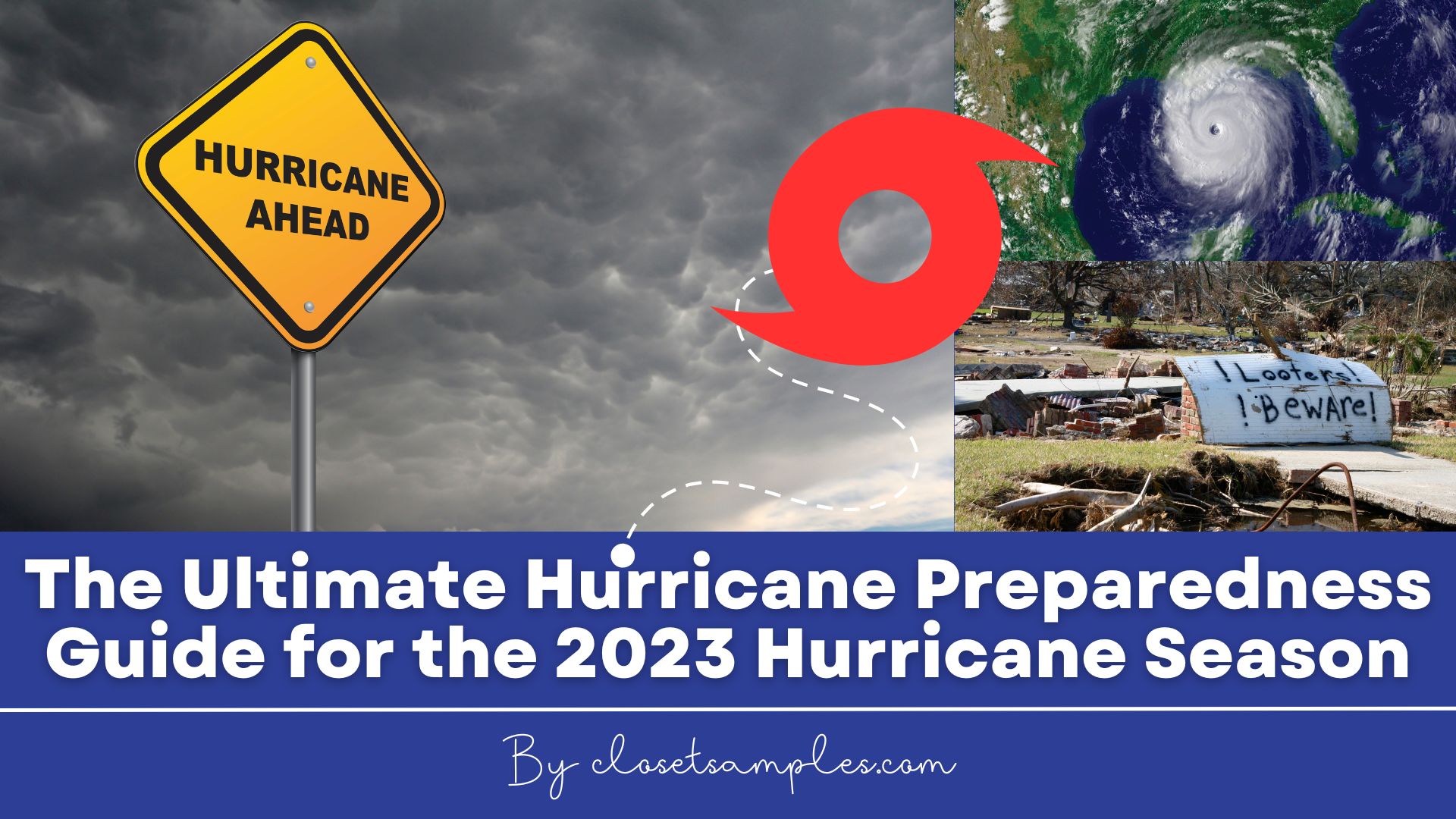
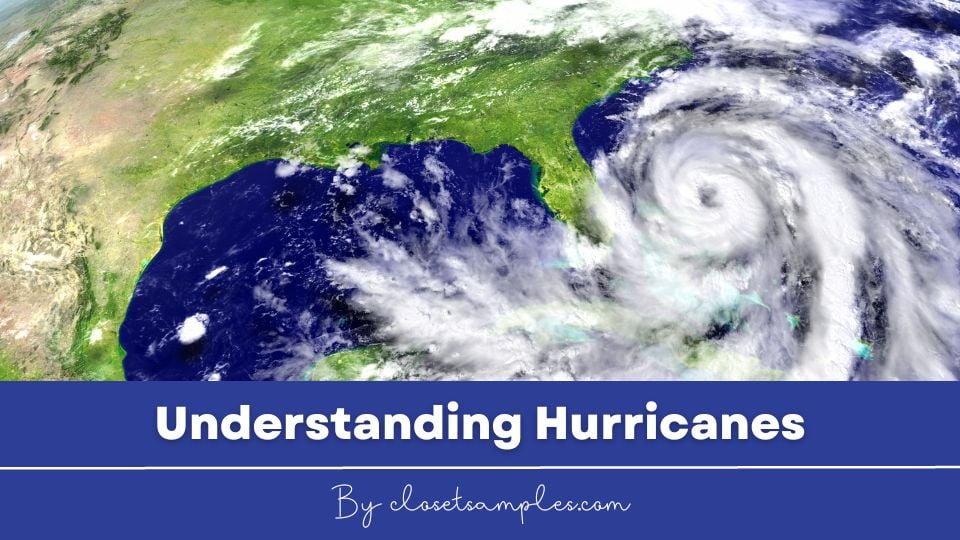
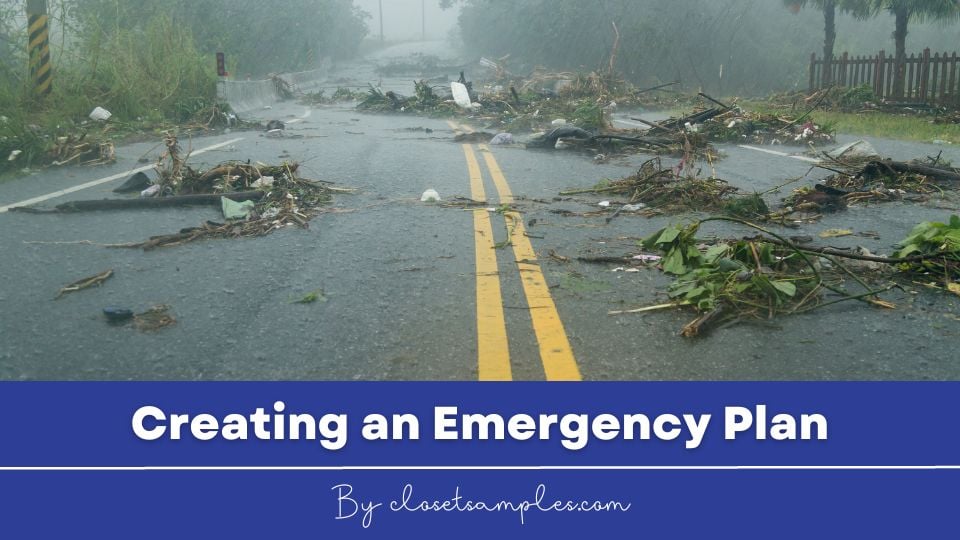

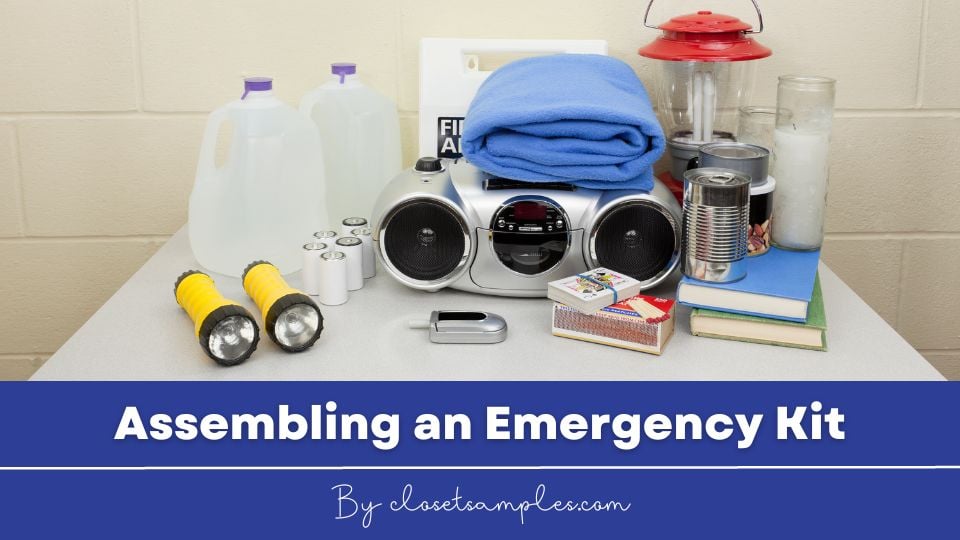
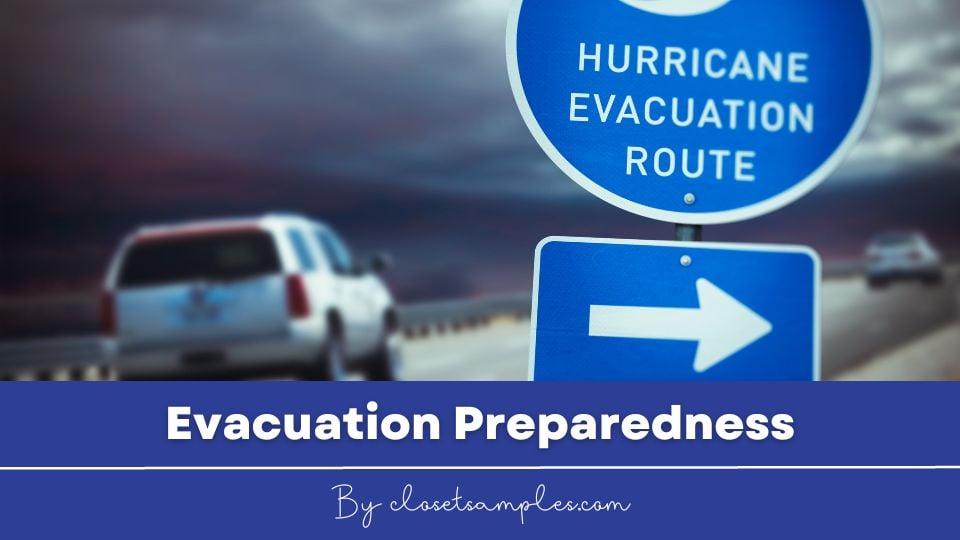
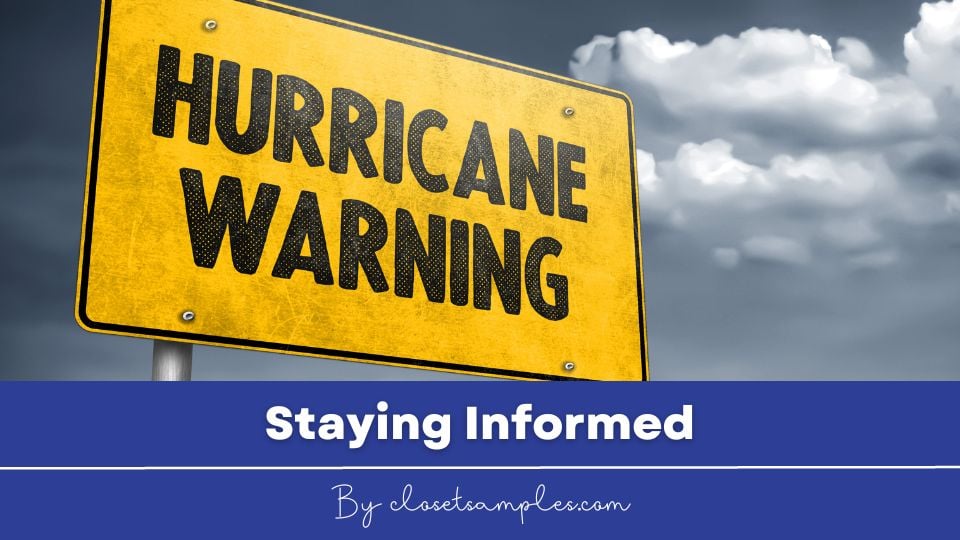
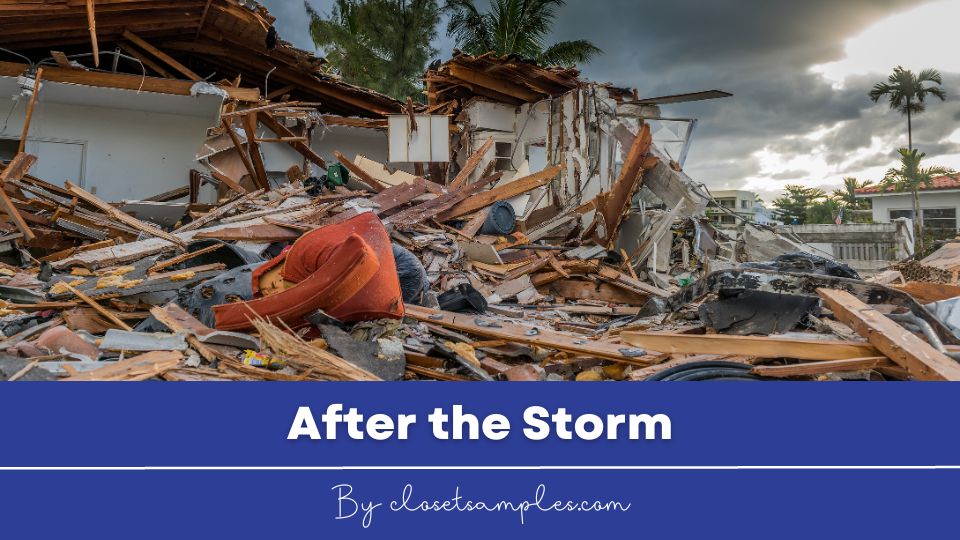



 Here you will find all the best coupon advice, tips and how to make the most of all your coupons!
Here you will find all the best coupon advice, tips and how to make the most of all your coupons! Are you looking for ways to stretch your dollar?
Are you looking for ways to stretch your dollar? 

